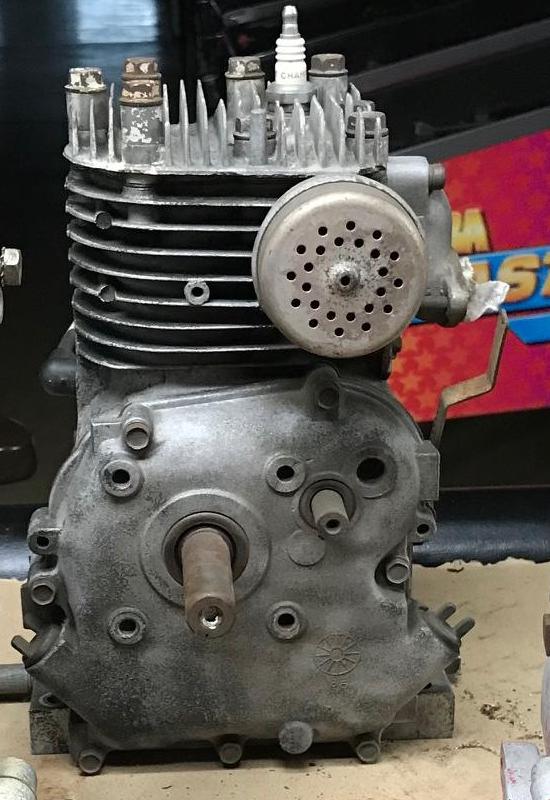
Work slowly when replacing your starter cord. Tip: if there's no notch in the recoil pulley, simply pull out a section of the cord and rewind the pulley as is shown in the second video for a Honda recoil starter. Here are several YouTube videos that will help you in stall a new recoil rope. Video Demonstration on Installing a New Recoil Starter Cord If it starts up, congratulations, you've done it correctly!
Try starting your engine using the recoil. Screw the bolts or nuts back in securely. Then, make sure the bolt holes on the recoil align with the holes on the rim of the shroud or align the bolt holes with the exposed bolts on the shroud itself. First, ensure that the handle is in the right position, leaning towards the fuel tank. Once you are happy that the cord rewinds properly, reinstall the recoil housing on the engine. If it doesn't, wind the pulley an extra revolution counter-clockwise. Pull the cord out several times and let it rewind to ensure it rewinds securely all the way. Allow the cord to recoil back into the housing. Note: if you wind the pulley and there is no resistance, the pulley spring is broken and you are best off replacing the entire recoil unit. Typically, you will wind the pulley (and cord) about 4 revolutions. If the pulley has a notch in it, you can put the cord in the notch and then use the exposed cord to wind the pulley. Hold onto the loop and use it to wind the pulley counter-clockwise until it is fairly tight. You can use a paper clip to reach in and grab the cord. Pull out a small section of cord (about 6-inches) in a loop away from the pulley. 
Reinstall the cap on the handle if applicable.
Attach the other end of the cord to the handle by threading it through the opening in the handle and knotting the end. Place a sturdy knot in the inner end of the cord to hold it on the pulley. Tip: heat the end of the cord with a match or lighter to make a firm pointed tip for threading. If that is too cumbersome, you can go the other way and thread the cord from the inside through the hole in the pulley and then out through the hole in the housing.  Thread the new cord through the hole in the housing and then through the hole in the pulley. Align the hole in the pulley, where you knot the cord, with the hole in the housing, where the handle returns. If it is a T-handle, the top cap will slide out exposing the knot that secures the cord. Also, remove the cord from the handle so you can reuse it. Remove the old, broken section of cord from the pulley inside the recoil housing. Place the bolts (or nuts) in a safe spot so they do not get lost. In some larger applications, there are up to four nuts that secure the recoil housing on exposed bolts that come straight out from the engine shroud itself. Usually there are three bolts that face inward and screw through the perimeter of the recoil into holes in a small rim that protrudes from the engine shroud. Unscrew the bolts to remove the recoil housing from the snow blower.
Thread the new cord through the hole in the housing and then through the hole in the pulley. Align the hole in the pulley, where you knot the cord, with the hole in the housing, where the handle returns. If it is a T-handle, the top cap will slide out exposing the knot that secures the cord. Also, remove the cord from the handle so you can reuse it. Remove the old, broken section of cord from the pulley inside the recoil housing. Place the bolts (or nuts) in a safe spot so they do not get lost. In some larger applications, there are up to four nuts that secure the recoil housing on exposed bolts that come straight out from the engine shroud itself. Usually there are three bolts that face inward and screw through the perimeter of the recoil into holes in a small rim that protrudes from the engine shroud. Unscrew the bolts to remove the recoil housing from the snow blower. #3.5 hp tecumseh engine pull cord spring full
Measure out the new cord so that it matches the full length of the old cord.This is probably more than you ever wanted to know about starter cord sizes.

Cord sizes generally start at #3 (3/32-inches) and extend to #7 (7/32 inches). Similarly, each increment in size of 1 corresponds to an increase of 1/32-inch in cord diameter. Each increment of ½ in size corresponds to an increase of 1/64-inch in cord diameter. Generally, we use cord size 5½ for snow blower and lawn mower starters.Ĭord sizes come in numbered increments of ½. For most common applications, use a cord numbered 5 (5/32-inches), 5½ (11/64-inches), or 6 (3/16-inches). If it is too thick, it will not wind around the recoil pulley enough times to ensure proper resistance. First select the proper starter cord (or rope) size to use.The following are step-by-step instructions for replacing a broken cord in the recoil starter for your snow blower or lawnmower: Steps for Removing and Replacing the Recoil Starter Cord The starter cord is also called a starter rope. The recoil starter is the pull-start mechanism on the back of the engine that enables you to start your snow blower or lawnmower.







 0 kommentar(er)
0 kommentar(er)
